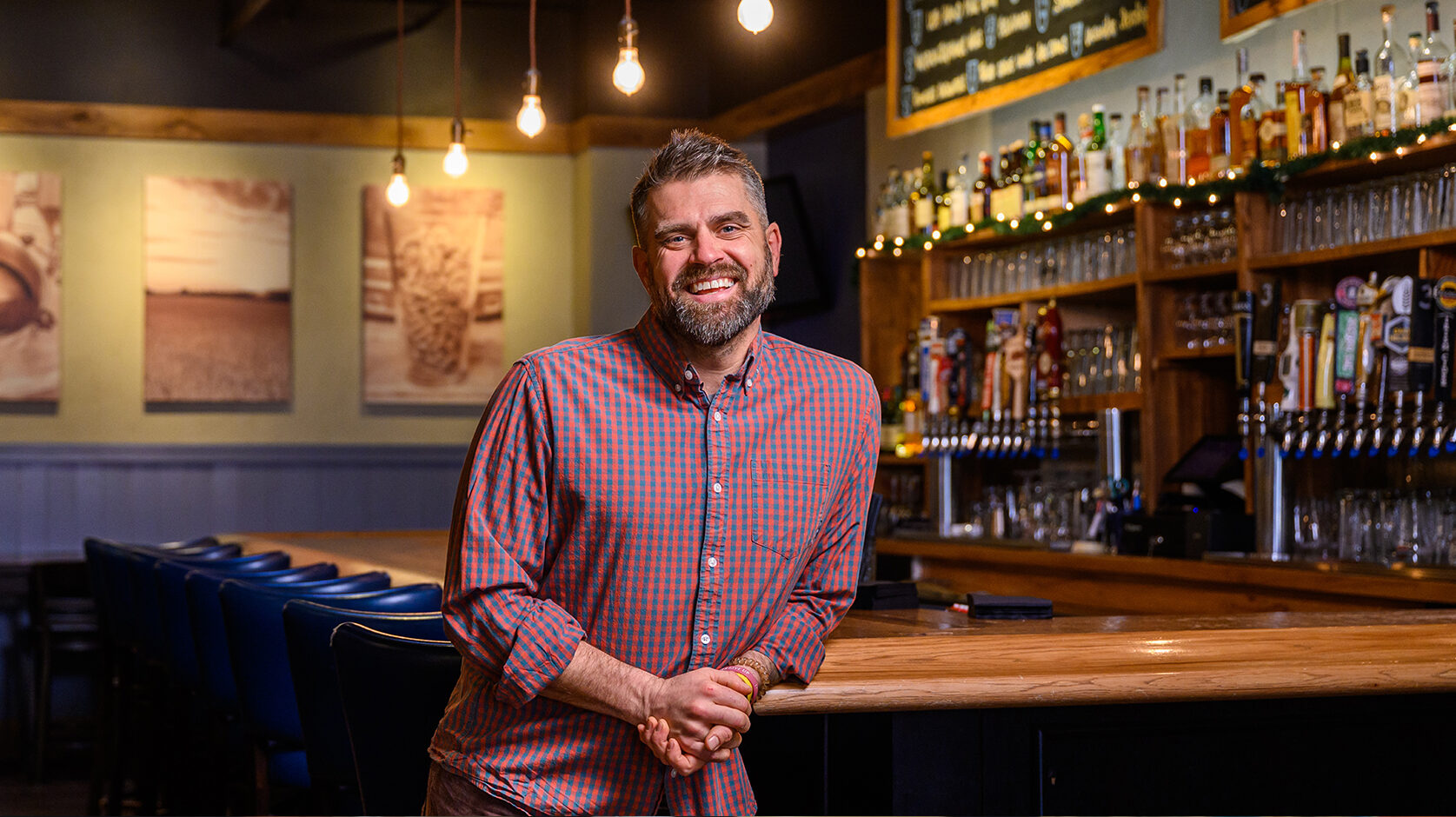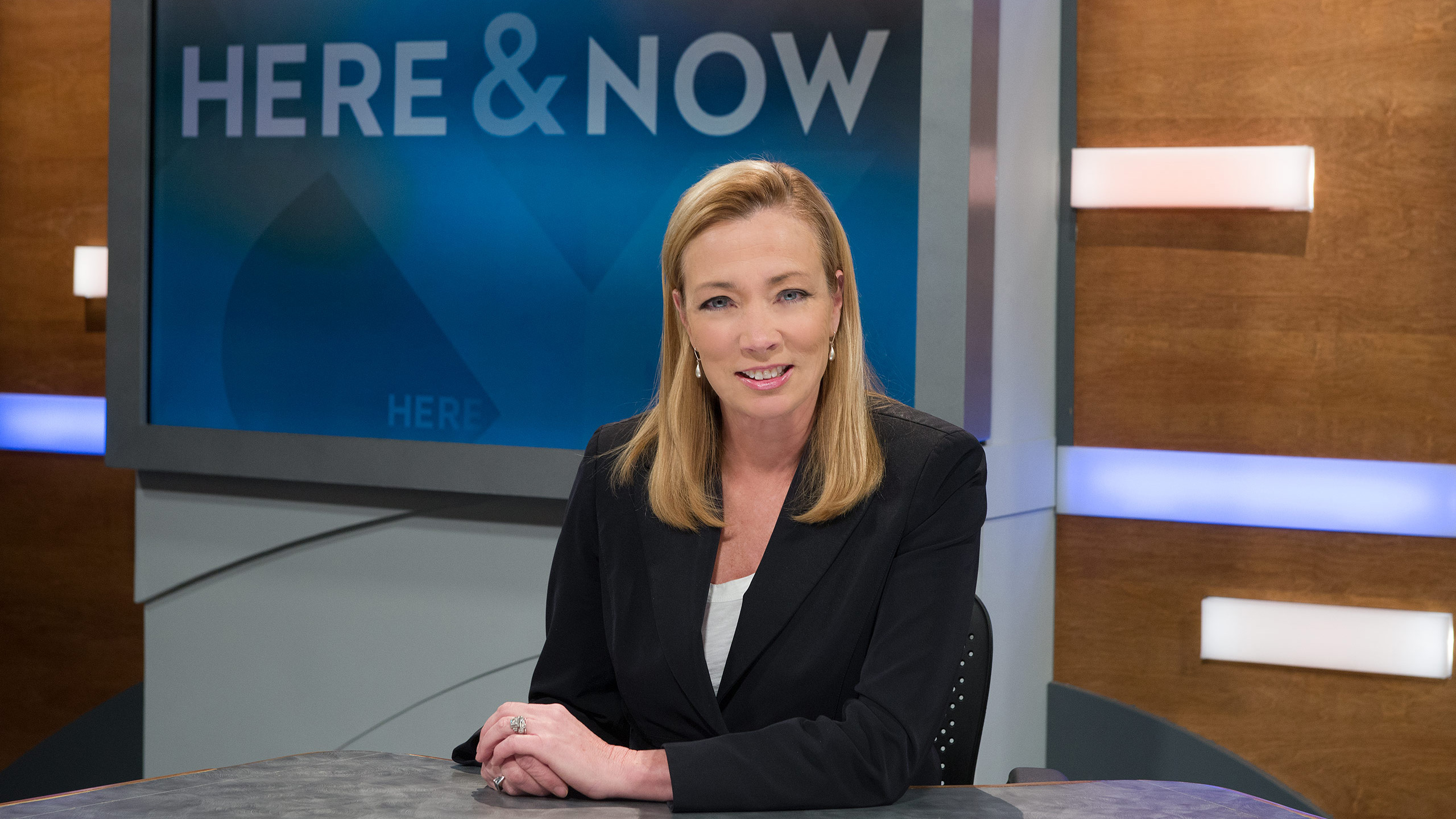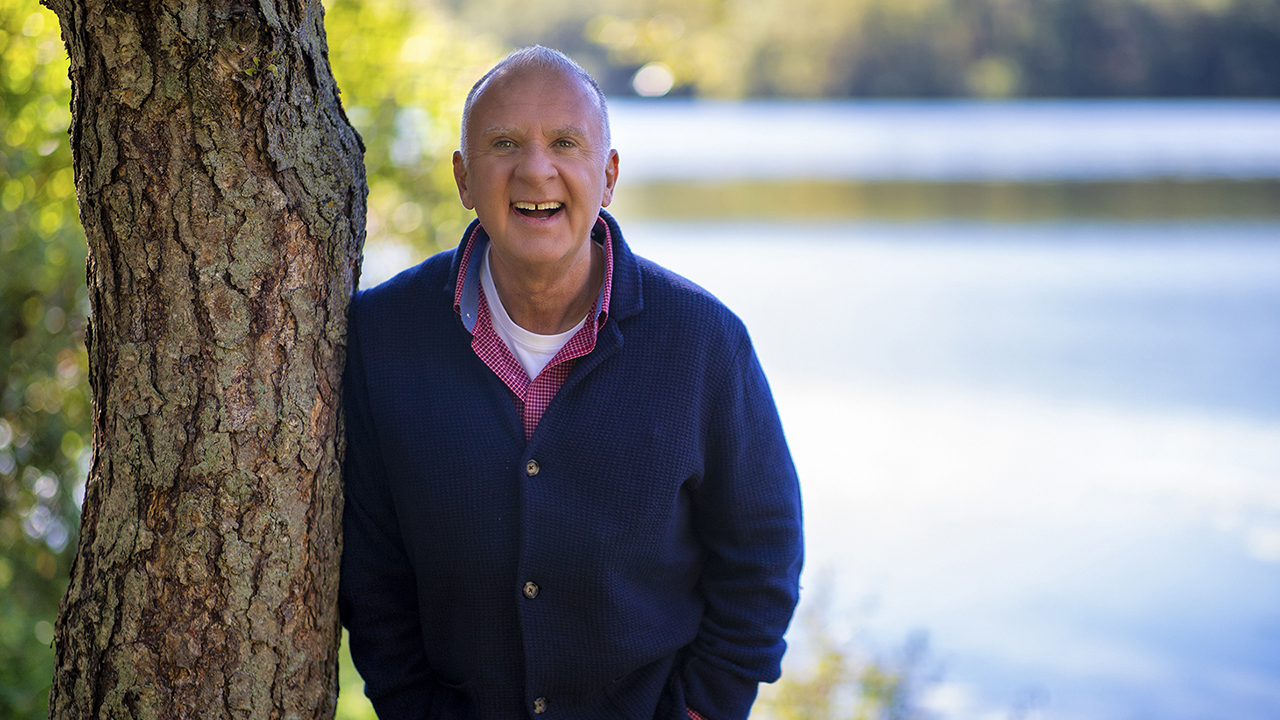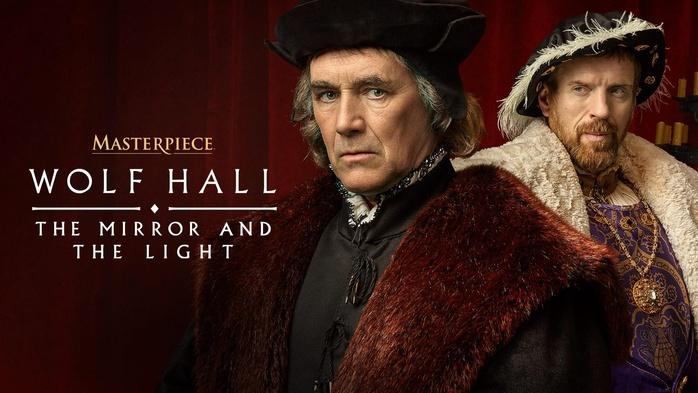– John McGivern: I am in one of the oldest cities in Minnesota, on a bluff overlooking the Mississippi River.
– Announcer: We thank the underwriters of John McGivern’s Main Streets because, without them, we couldn’t make this show.
– Announcer: The Wisconsin Northwoods are calling.
One word, one place.
Minocqua.
– Man: My father taught me that to make great bakery, you have to do it the right way.
O&H Danish Bakery, where Kringle traditions begin.
– Announcer: There’s always something shining bright in Sun Prairie, Wisconsin.
– Announcer: Your community’s best selfie spot is Your-Type.
– Announcer: Visit Oconomowoc.
Lakes, festivals, shopping, dining.
The heart of Lake Country.
– Announcer: Yes, Greendale is beautiful on the outside, but it’s what’s inside that counts.
Who doesn’t love opening a door to their happy place?
Whether it’s indulging your sweet tooth… winding down… or exploring your creative side… come on in.
You just gotta see Greendale.
– Announcer: John McGivern’s Main Streets is grateful for additional financial support from… Horicon Bank– The Natural Choice, West Bend Insurance Company– the Silver Lining, our nonprofit, the Friends of Main Streets and from the Friends of PBS Wisconsin.
Thanks, underwriters!
– ‘Cause these are our main streets Something about a hometown speaks to me There’s nowhere else I’d rather be The heart and soul of community’s Right here On these main streets – John: Saint Paul is the capital of Minnesota, and with a population of just over 303,000, it’s the second-largest city in the state of Minnesota, right next to its twin, Minneapolis.
Saint Paul is about 12 miles east of Minneapolis and about 20 miles west of Wisconsin.
The southern edge of Saint Paul lies where the Minnesota and the Mississippi Rivers come together.
Saint Paul has dozens of historic neighborhoods like this one.
This is called Cathedral Hill, and it’s named after its historic landmark, the Cathedral of Saint Paul.
Emmy, we are in Saint Paul, one of the Twin Cities.
So, as our historian, which of the Twin Cities is the oldest?
– Emmy Fink: The oldest is Saint Paul.
– John: And when did Saint Paul actually become a city?
– Emmy Fink: 1854.
But it had been put on the map thanks to a gentleman named Pierre “Pig’s Eye” Parrant, who was a fur trader, but then turned into a bootlegger.
But people called him “Pig’s Eye.”
– John: Well, I think Saint Paul is much more appropriate than Pig’s Eye.
– Emmy: And a Catholic priest agreed.
He came.
He named the city Saint Paul after a chapel that he had just built.
– John: Who lived here?
– Emmy: Well, look at these places.
We’re talking, like, the wealthiest early business owners.
They built these beautiful, large, extravagant homes and buildings.
– John: Yeah.
– Emmy: But what’s nice is they’re still here.
– John: We should explore all of this.
– Emmy: Yes.
House hunt?
– John: Do you have a realtor?
– Emmy: I don’t.
Do you?
– John: Let’s get house– Come on, let’s go look at these.
Do you remember that old TV show Lifestyles of the Rich and Famous?
If that had been going on in the 19th century, this would have been the backdrop: Summit Avenue.
This is the longest avenue of Victorian homes in the United States.
They were all built before the Great Depression, then some were left vacant, some were turned into rooming houses.
And then, of course, restoration of this historic neighborhood began in the 1960s.
373 of the original 440 homes, historical homes on Summit Avenue, are still standing.
What a beautiful home!
When was this built, and why is it so big?
– Mariah Ring: “Why is it so big?”
So it was built in 1888 and completed in 1891 by James and Mary Hill.
And part of the reason why it’s so big is because they had the money to do it.
– John: And he made his money how?
– Mariah: The railroad.
He builds a transcontinental railroad, not the first but a very successful one.
He was married to Mary Hill.
– John: Yeah.
And he had how many kids?
– Mariah: They had ten.
– John: Why didn’t the kids keep this house?
– Gibson Stanton: That’s a great question.
Realistically, they all had their own lives, and so, they didn’t really need this space.
– Mariah: And then, it was donated to the archdiocese after that.
– John: Oh, is that right?
The Catholic Church got it.
– Mariah: Correct.
– John: And now, it’s a state historical place.
– Gibson: We are in the art gallery of the James J. Hill House, complete with a custom organ.
– John: It would scream that this is a house with some money.
– Gibson: With a little bit of money.
– John: Yeah.
– Mariah: We have different events and rentals that happen.
We have tours and school tours of all different kinds.
– John: So this is quite the dining room.
– Mariah: It is, isn’t it?
– John: [chuckling] Right.
The ceiling is what?
– Mariah: It’s 24-karat gold leaf.
– Gibson: Welcome to the basement.
– John: And what was down here?
– Gibson: This is where the staff were primarily working, so you have the servants’ dining room.
We have a wine cellar.
– John: The kitchen.
– Gibson: The kitchen.
– John: This is very Downton Abbey, you know.
– Gibson: It is.
It’s Saint Paul’s Downton Abbey.
– John: Yeah.
[Gibson laughs] – Mariah: This was the ballroom.
– John: Yeah.
It’s a gorgeous space.
– Mariah: Mm-hmm.
– Gibson: And if somebody were to come in and break in, the current would be broken here, and it would wake you up in the middle of the night.
[mechanical bell blares] – John: Somebody’s in 18!
So great.
And how all of the woodwork all over this house just looks terrific.
– Gibson: It’s been really well-preserved.
– John: They sure lived differently, didn’t they?
– Gibson: They definitely did!
[John laughs] This is the Louis Hill house, and this is Nancy Nicholson.
How are you?
Nancy Nicholson: I’m good, thank you.
– John: Because this is not the Louis Hill house anymore, is it?
– Nancy: No, it’s Dick and Nancy’s house.
[laughs] – John: That’s what it is!
And half of this is the original house, right?
– Nancy: Correct.
– John: And do you ever fill this table?
– Nancy: Oh, honey, yes.
All the leaves are in.
It seats 22.
– John: 22.
– Nancy: We don’t have any secret passageways.
– John: How many years later did they add on to the house?
– Nancy: But ten years later… We have the good old safe, and… Louis Hill has just become president of the Great Northern Railroad, which James J. Hill started.
So, this is what’s precious to Nancy.
This is my solarium, and it’s a little bit of Florida here in Saint Paul.
– John: It was built the same time the house was?
– Nancy: Yes, 1902.
The stained-glass windows were finished in 1904.
And here is a copy of the receipt, and it was $590.
So, uh, good taste… – John: I’ll give you a thousand bucks for it.
– Nancy: No, no, no.
– John: I swear to God.
– Nancy: And then, upstairs is a grand ballroom.
And he also added a pipe organ.
– John: Because he wanted to entertain.
– Nancy: He wanted to entertain.
– John: And is that still here, that pipe organ?
– Nancy: It is, and it plays.
– John: And it plays.
– Nancy: Yes, yes.
– John: Yeah.
[Nancy plays organ smoothly] You will notice we respected the history of the home, so we brought it back to what it was like for Louis and Maud Hill.
– John: Right, wow.
And how great that it’s all stayed, it’s all lasted… – Nancy: Yes, yes.
– John: That nobody was like, “Oh, let’s get rid of that.”
– Nancy: Well, I would say, “Let’s ring the bell for preservation.”
– John: Yeah, preservation.
You should be on the cover.
[Nancy laughs] – John: Thank you.
You’ve been a rector at this cathedral for how long?
– Father Joseph Johnson: About two weeks.
– Two weeks?
How about that?
[both laugh] – Father Joseph: So, I’m a real expert.
– John: I’ve heard the story that you were here before.
– Father Joseph: I was here before.
– John: How long ago was that?
– Father Joseph: That was 12 years ago.
– John: Oh, good.
– Father Joseph: I’m my own predecessor and my own successor, right?
– John: Right!
How long have you been a priest?
– Father Joseph: 26 years.
– John: And did you seminary in Saint Paul?
– Father Joseph: No, in Rome.
– John: In Rome.
– Father Joseph: So, I think the reason they gave me a big, old stone church is they knew I’d spent a decade of my life living around big, old stone churches.
– John: You knew what it felt like?
– Father Joseph: Yes.
It is a functioning parish community, as well as the mother of the church of the diocese, as well as a national shrine, as well as a civic monument, deeply cherished, part of the history of this community.
– John: When was the first brick laid on this building?
– Father Joseph: 1906, they started digging the hole.
– John: When were the doors opened?
– Father Joseph: Well, so 1915, for Palm Sunday, was the first Mass.
– John: Yeah.
– Father Joseph: And Saint Paul was largely the immigrants who were German, and a lot of Irish and French and Italian and Eastern European.
So, part of our cathedral is actually dedicated to those immigrant groups that came.
– John: If we’re comparing domes, this and the Capitol, which one’s bigger?
– Father Joseph: There’s no comparison.
– John: There isn’t.
– Father Joseph: This is much bigger.
So it’s the sixth-largest dome in America.
– John: It’s so well done, isn’t it?
– Father Joseph: It is.
– John: Let’s talk about these four pillars.
– So, the pillars of the church support the weight of the dome.
And then, in them, we put the statues of the four gospel writers, the evangelists Matthew, Mark, Luke, and John.
Because those gospels tell us the life and teaching of Jesus, those are the pillars of our faith.
And then this, of course, is the chair.
The cathedra.
– John: Cathedra.
– Father Joseph: …which gives its status as cathedral rather than just a parish church.
– John: Yeah, can we talk about cost?
I know that my father would say, “What did you ask him?!”
– Father Joseph: It’s hard to get a total for how much it cost because it was built in phases.
But sometimes people say to me, you know, “Why, you know, spend all of this money on it?”
It was because they wanted to, to do something beautiful, you know?
But this became a place where everyone could come and be touched by that beauty.
And all beauty, whether it’s the beauty of nature or the beauty of art, reminds us of the beauty of God.
– John: Yeah, nice.
Saint Paul is the birthplace of the author F. Scott Fitzgerald.
We know his work, The Great Gatsby.
He was born on the second floor of this house.
His family moved to Buffalo, but they couldn’t stay away from Saint Paul.
They moved back, and they moved into this house on Summit Avenue.
After a stint in the Army and after suffering a broken-hearted relationship, Fitzgerald moved back in with his family here in Saint Paul.
And because of that heartbreak, he wrote his first novel, This Side of Paradise.
If you don’t know that, pick it up.
I think it’s better than The Great Gatsby.
I really do.
Now, it’s early work, but after that… We are sitting at the bar at W.A.
Frost.
How are you, sir?
– William Kent Krueger: Very good, John, very good.
– John: Let’s talk about your work.
Let’s talk about how people know you.
– William Kent Krueger: Well, for most of my career, which has spanned now better than a quarter of a century of publication, I’ve been best known as the author of the– I love saying this– New York Times bestselling Cork O’Connor Mystery Series.
– John: Congratulations!
Isn’t that great to say?
– William: I love saying it, love saying it.
– John: Good for you.
You know, 21 is a– that’s quite a series.
– William: If you’d asked me a quarter of a century ago… [laughs] “Are there going to be 21 books in your series?”
I’d have said you were nuts.
– John: “You’re nuts.”
– William: Yeah.
– John: Yeah.
– William: If you’ve been writing as long as I have, you hope that you get a following.
And I have a really, really nice following now.
– John: And most of the action takes place in the State of Minnesota, yes?
– William: Absolutely.
They are Minnesota-centric stories.
– John: Is there a schedule that you keep every day, writing?
– William: Seven days a week, I’m up before 6:00.
I write for 2 to 3 hours, and that’s when I do all my creative work.
I got that from Hemingway, who loved nothing better than rising at first light every day and spending the first two hours writing.
He thought it was the most creative time of the day.
It has worked.
– John: Yeah.
Were you raised in this city, in this area?
– William: No, I’m not native to Saint Paul.
– John: You weren’t, but this is home now, 40 years later?
– William: It’s been home for 40 years.
And I think of every book that I write is kind of a valentine to this adopted home of mine.
I want readers to fall in love with Minnesota the way I love it.
– Thanks for talking to me.
– William: Thanks, John.
– John: A pleasure, thanks.
There is a cartoonist who created cartoon characters that everybody knows and loves.
Who is this beloved cartoonist who was raised in Saint Paul and inspired by this city?
[quizzical music] – Emmy: Look who I found– Linus and Sally.
And their creator, Charles Schulz, well, he grew up right here in Saint Paul.
Of course, Snoopy is everybody’s favorite.
Good boy.
The first comic was published back in 1950.
Oh, Lucy, it’ll never happen.
Fast-forward 75 years later, and all of these characters are still so loved.
Look at this amazing spaghetti hair!
– John: So, this is your coffee shop?
– June Berkowitz: It is.
– John: It’s called Nina’s Coffee.
Nina is part of the history of this neighborhood.
And what did Nina do in this neighborhood?
– Nina was a madam.
– John: A madam.
– Back in the John Dillinger days, she owned a brothel.
This was the Angus Hotel.
And so, people think that it was Nina’s brothel, but that’s not true.
That was Downtown Saint Paul.
So, I decided to keep the name.
– And how long ago was that?
– June Berkowitz: Twenty years ago.
It’ll be 20 in February.
– John: So you’ve owned this coffee shop for 20 years.
– June: Twenty years.
– John: Can we talk about this neighborhood?
– June: It’s an incredibly diverse neighborhood, which makes it very appealing to me.
And that’s one of the reasons I wanted to be here on this corner.
It’s a neighborhood caf.
– John: And this building… What’s the history of this building?
– June: If you look from the outside, you’ll notice it’s one big brownstone with 40 condos above.
– John: It’s great.
– June: Yeah, so pretty.
– John: Is there a reason for her to be here?
– June: No.
– John: Spot?
– June: She came with the spot.
– John: Now she’s iconic here.
– June: Absolutely.
This is called the crow’s nest.
People come here at 6:30 in the morning so that they can get that spot.
From the perch, you can hear and see everything.
– Doing a “Madam Nina.”
– John: Which is what?
– It’s a latte with honey and cinnamon.
– John: Tap it down.
It seems second nature to you.
– I’ll see if I can make it nice and pretty.
– John: Good.
What’s the trick to that?
– Years of practice.
– John: Is it?
[laughs] Look at that!
– June: The people behind the counter, they build relationships with people.
And remember, it’s about community first, coffee second.
– John: So, are you a good barista?
– June: No.
I’m horrible.
– John: You– [guffaws] June, to Nina’s.
– June: Cheers.
– John: This is delicious.
– June: Is it good?
[laughter] [playful acoustic jazz] – John: When did you open this up– this location?
– Marc Heu: It was May 20th of 2023.
– John: 2023.
– Marc: Yes.
– Gaosong Heu: One day, I was driving down the street here on Dale, and then, I saw that this spot was open, and I was like, “That would be the perfect location for us.”
It just felt… right.
Sometimes, when it’s right, it just is.
– John: And so, a patisserie is a– is it what we call bakeries?
– Marc: We make the croissant– it’s a dough– but we also make pastries.
I mainly focused on dessert, on cakes.
– John: Talk about your journey here as far as pastries go, – Marc: When I did come to the U.S., I was a medical student.
– John: You were a medical student.
– Marc: Yes.
And found out that– oh, you know what?– it’s actually not my first passion.
My first passion has always been food and, especially, pastry.
What if I can turn that hobby, that passion, into making a living and sharing it with people?
– John: We did good.
[chuckling] – Marc: Awesome.
– Gaosong: I encouraged Marc to follow his passions and dreams.
Also, selfishly, I just like to eat good food, so I wanted to see everything that he made.
– John: A good croissant?
C’mon.
– Gaosong: Yeah, but I could have never imagined this would’ve been our life, but I’m really happy.
And just every day, I think– I’m just shocked and amazed that this is, like, the life that we’ve been able to create together.
– John: Congratulations.
– Marc: I always joke around that I get to do the fun part, which is just 1% of the business, making the goods, and my wife, Gaosong, just takes care of everything else.
– Gaosong: I just can’t wait to share more of Marc’s talents with, like, everybody in our community.
– Marc: It’s always joyful to be sharing your passion with other people.
I mean, it’s food.
Anybody needs to eat, and anybody deserves, like, a good treat.
So, every time we make something, we have to be mindful of that, and we have to make sure that it’s affordable to most of people.
– Gaosong: I’m just really happy that people want to use our desserts as a point of celebration.
– Marc: I love Saint Paul, I love Minneapolis, I love Minnesota.
– John: That’s delicious.
My Lord.
– Marc: I love America.
– John: OK, well, you should.
– Marc: Yeah!
[all laughing] – John: We’re at a restaurant called Moscow on the Hill.
I love this story.
How did this place begin?
– Marina Liberman: It began as a French restaurant called Quail on a Hill, and we bought it in 1994.
– John: OK. Where were you before 1994?
– Marina: We came in 1992 from Moscow.
So, we’re family from Moscow, yeah.
We didn’t have any cooking education.
– John: Restaurant was not your background in Moscow.
– Marina: No, no.
– John: What did you do in Moscow?
– Marina: I’m a neurologist.
– John: You’re a neurologist?
– Marina: Yes.
– John: Is the restaurant work a little different than… – Marina: Just a little.
– John: …than brain science, isn’t it?
– Marina: Just a little.
But you have to do the effort to comfort your customer, which is a really hard brain job.
– John: I bet it is, yeah.
– Marina: [laughs] Yeah.
– John: Did you have recipes in your pocket that you were, like, “This is what I want to serve this community”?
– Eugene Liberman: Traditional Russian cuisine that would be good for people in the Midwest.
– John: Right.
– Eugene: Right.
And Russian food is similar to German cuisine.
– John: Polish?
– Eugene: Polish cuisine– meat, potatoes, cheese, cabbage.
And we incorporate all those things in.
– John: Is there a big Russian community in the Twin Cities?
– Eugene: I’d say about 60,000 to 70,000.
But our customers are good old-fashioned Midwestern people.
– John: This is downtown Cathedral Hill neighborhood.
– Eugene: Downtown neighborhood.
– John: What was it like when you came?
– Marina: It’s changed dramatically through the years.
– John: And for the better?
– Marina: Absolutely.
So now it’s a destination.
– John: Russia is known for their vodka.
– Eugene: Nobody’s going to have more vodka than us, maybe in the Midwest.
This is our horseradish vodka.
– John: Horseradish.
And this is really your recipe?
– Eugene: This is my father’s recipe.
– John: Your father’s recipe.
– Eugene: My father’s recipe, yep, yep.
– John: So, people love your patio?
– Eugene: It’s not on the street, so not everybody sees it, but that’s also one of its charms.
– Marina: It’s a salad known everywhere in Europe.
It’s called salad Olivier, and usually is a salad served on December 31st, the biggest holiday during the year.
– John: Do you have it every New Year’s Eve?
– Marina: Absolutely.
– John: You do?
– Marina: Everybody has it.
– John: Along with what?
– Marina: Vodka.
[laughter] You can see green peas.
– John: Green peas.
– Marina: Yeah.
You can see carrots.
You can see pickles.
– John: Sure.
– Marina: You can see ham.
In our case, it’s a ham.
– John: Yeah.
You can join me if you like.
– Marina: Can I?
Thank you.
– John: Yes, please.
[chortles] Very good, it’s lovely.
Thank you so much.
– Marina: You’re more than welcome.
– Thank you for sharing it.
– Marina: Thank you so much, sure.
– John: Congratulations on 30 years in this business!
The American Dream.
You know, it says it all, doesn’t it?
– Marina: Yes.
– Emmy: One of the things I love most about the Midwest is it seems like every town has their own unique summer festival.
Well, here in this Saint Paul neighborhood, that festival is Rondo Days, and it happens every year, the third Saturday in July.
The Rondo neighborhood forever changed back in the ’60s, when the interstate was put in and split the community in two, so the geography of the neighborhood has changed, but the heart is still right here.
– John: This is your shop.
Whose idea was this?
– Rdella White: It was actually my husband’s idea.
One day, he said, “Hmm… How about we open up a ice cream shop?”
And I was like, “Oh, that’s a good idea.”
Whatever he wants is what I want, so… – John: Is that true?
– Brian White: Pretty much.
– John: OK, good.
That’s good to know.
So it’s not just ice cream, right?
– Rdella: We’re called 2 Scoops Ice Cream Eatery, so we have a hot food menu.
We take pride in our food also.
– John: And who doesn’t like ice cream, right?
– Brian: Everybody likes ice cream, so little kids all the way up to the grandparents and everybody in between.
– Is there an ice cream flavor that the kids really love?
– Brian: Oh, my goodness.
– Rdella: Yes.
– John: What is it?
– Brian and Rdella: Superman!
– John: Superman.
[all laugh] Do you know this neighborhood?
– Brian: I grew up in this neighborhood.
– This is your neighborhood?
– Brian: This is my neighborhood.
This is where we grew up, and this was our stomping ground, so now this is our ice cream shop.
– John: You’re at a great corner, too, aren’t you?
– Brian: We are.
– John: Like, you can’t miss the place.
– Brian: Yeah, great location, yeah.
– John: Talk about the 2 Scoops for Kids.
– Rdella: So, when parents come in, sometimes when they don’t have enough money to get all their children ice cream, we tell them, “Don’t worry about it.”
We have a foundation here that’s called 2 Scoops for Kids.
No kid will go without an ice cream cone.
We make sure they don’t go.
No kid will walk out of 2 Scoops Ice Cream Eatery crying because they don’t have ice cream.
No way.
– John: What’s this?
– Leo Jackson: So, this is our Cream of the Crop.
Every single one of these athletes has played a role in our lives.
These are our friends, family members, people that I may have coached or trained.
Maybe a little bit more.
– John: Cream of the Crop.
– Leo: Cream of the Crop.
Which one would you like today?
– I want the homemade waffle cone.
– Leo: Homemade waffle cone it is.
And then we’ve got our 18 flavors to choose from.
And then we’ve even got some vegan options and some non-dairy options for people.
– John: Nah, not really interested.
[laughter] Munchie Madness.
– Leo: You’re gonna try Munchie Madness?
– John: Yeah.
– Leo: All right, you’re gonna love it.
– Now, that’s a good-looking cone right there, isn’t it?
– Leo: That is a waffle cone.
– John: I’ve been looking forward to this for two days.
– Leo: Hey, absolutely.
Welcome to 2 Scoops.
I hope you’re not on a diet.
[chuckles] – John: That’s none of your business, man.
It’s a corner ice cream shop.
Come on!
[laughter] Saint Paul is home to a minor league baseball team called the St. Paul Saints.
It’s an out-of-the-box name, isn’t it?
Yeah.
There’s a comedic actor who was part owner of that team for many years.
Who was that comedic actor?
[quizzical music] – Emmy: Here’s a good hint for you: Groundhog Day.
Actor Bill Murray founded and was part-owner of the St. Paul Saints for 20 years until it sold in 2023.
Now, this is what’s cool.
It’s not like he’s from here.
He didn’t grow up here.
He grew up in Illinois, but he thinks Saint Paul is pretty cool.
– John: We’re at the Saint Paul Curling Club with the general manager, Scott Clasen.
How are you, sir?
– Scott Clasen: Pleasure to meet you, John.
– John: Good to see you.
Let’s talk about the history of this club.
When did the doors of this club open?
– Scott: 1912.
We only had six sheets of ice back then.
And then we added two more sheets.
There are a few clubs that have eight sheets, but eight is the most in the United States.
– John: So the sport of curling consists of what?
– Scott: Curling is basically sliding a 40-pound piece of granite 100-plus feet down the ice to a target, and each player throws two rocks.
The closest rocks to the center score.
– John: Who’s the guy with the broom?
– Scott: Typically, there’s two guys sweeping… – John: Sweeping.
– Scott: …when one guy is throwing, and the sweeping helps the rock to go straighter and further.
– You got to yell at him.
YELL at him!
– Emmy: Come on!
SWEEP!
SWEEP!
Yes!
Farther… – Man: So now, they call that a hog.
– John: That’s a hog!
– Man: Didn’t get over– didn’t get over that line.
– John: Anybody ever start at my age, which is old?
– Scott: Yep, we have juniors, probably from ages five, all the way up to 90.
So, it’s a lifelong sport.
– Emmy: Give it a go!
Just let it go before the hog line.
– Scott: Now twist.
– Emmy: Nice… NICE!
Goliath throw!
– John: It was too much, wasn’t it?
– Emmy: Well, I think that’s why he went sprinting down the ice.
– Man: So you can just– we’ll judge how you do it.
– Emmy: All right.
Buckle up, boys.
Here we go.
– Man: Sweep hard, c’mon!
– Emmy: Come on.
– John: I’m trying!
– Man: Go!
– John: Come on, you big hog!
– Emmy: Make it better!
– Man: Oh, my gosh.
– John: Yes!
It’s a little hog!
So, if I started today, how long would it take me for somebody to be like, “Hey, why don’t you be on my team?”
– Scott: Well, we’d have to see how good you are to begin with.
– Man: Nice.
[playful folksy music] – John: Sit down.
– Man: Beautiful.
– Emmy: Yeah!
– John: Whoo!
– Emmy: You did it!
– John: We got it!
We’re winners.
Buzzer beater!
It was good!
– Emmy: You did it!
– John: Oh, my God.
– Emmy: You did it!
– John: OK. Now, is there a trophy?
[laughs] – Emmy: All right.
These guys are awesome.
– Man: Hey, good job.
– All: Good curling!
[ Main Streets theme music] – Emmy: Well, I don’t know how it’s done because I feel like we’ve only scratched the surface of Saint Paul.
– John: It was that perfect blend of old and new.
Cathedral Hill should be a part of anyone’s visit to the Twin Cities.
– Emmy: It should, and I’m really glad we made it a part of ours.
– John: I am, too, Em.
– There’s nowhere else I’d rather be The heart and soul of community’s Right here… – John: …that have been loved by– [gibberish] – Emmy: Look who I found.
[pause] Linus?
– Lois: That’s right.
– John: Part owner of that uh… Ooh!
[laughs] Sorry.
[laughter] – Emmy: The third Saturday of every year.
That doesn’t make sense.
– John: I’m so hot!
– Father Joseph: And these two pedestals are still waiting for their statues here.
– John: And do you know what they’ll be?
– Father Joseph: I think I’ll put a statue of me.
[laughter] – John: I love that story.
Do you want to hear more?
Because this is what I was thinking.
– Emmy: No, come on, OK?
[John laughs] – Announcer: We thank the underwriters of John McGivern’s Main Streets because, without them, we couldn’t make this show.
– The Wisconsin Northwoods are calling.
One word, one place.
Minocqua.
– My father taught me that to make great bakery, you have to do it the right way.
O&H Danish Bakery, where Kringle traditions begin.
[playful melody] – There’s always something shining bright in Sun Prairie, Wisconsin.
– Announcer: Your community’s best selfie spot is Your-Type.
– Announcer: Visit Oconomowoc.
Lakes, festivals, shopping, dining.
The heart of Lake Country.
– Announcer: Yes, Greendale is beautiful on the outside, but it’s what’s inside that counts.
Who doesn’t love opening a door to their happy place?
Whether it’s indulging your sweet tooth… winding down… or exploring your creative side… Come on in!
You just gotta see Greendale.
– Announcer: John McGivern’s Main Streets is grateful for additional financial support from… Horicon Bank– The Natural Choice, West Bend Insurance Company– the Silver Lining, our nonprofit, the Friends of Main Streets, and from the Friends of PBS Wisconsin.
Thanks, underwriters!
– John: To Lois.
– William: To Lois.
I’m always happy to sign for a fan, but I have to warn you, I do charge for this.
– John: [laughs] I’ll tell her.
[cracking up]
Search Episodes

Donate to sign up. Activate and sign in to Passport. It's that easy to help PBS Wisconsin serve your community through media that educates, inspires, and entertains.
Make your membership gift today
Only for new users: Activate Passport using your code or email address
Already a member?
Look up my account
Need some help? Go to FAQ or visit PBS Passport Help
Need help accessing PBS Wisconsin anywhere?

Online Access | Platform & Device Access | Cable or Satellite Access | Over-The-Air Access
Visit Access Guide
Need help accessing PBS Wisconsin anywhere?

Visit Our
Live TV Access Guide
Online AccessPlatform & Device Access
Cable or Satellite Access
Over-The-Air Access
Visit Access Guide
 Passport
Passport







Follow Us